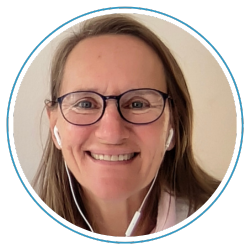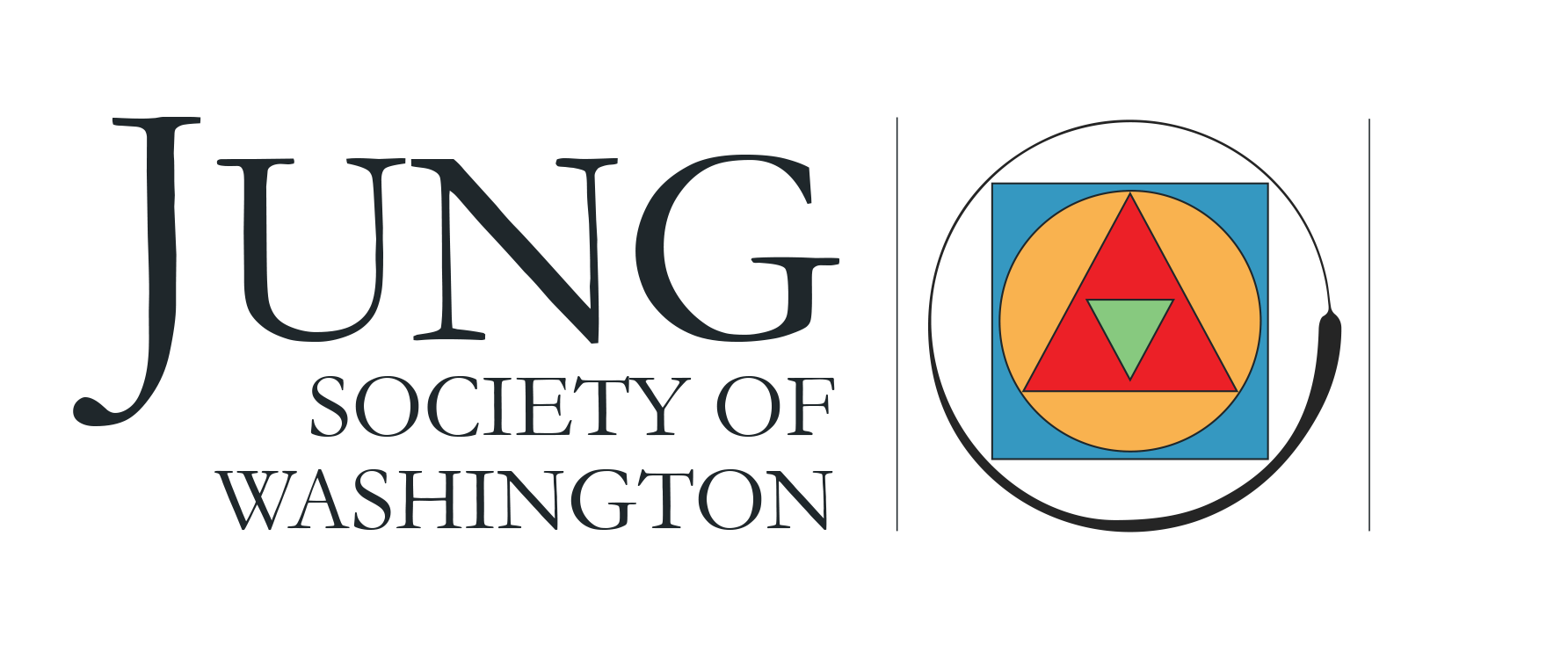I had a strange dream when I was beginning my training to become an analyst in 1996 at the C.G. Jung Institute in Küsnacht, Switzerland. In the dream, I was met by Carl Gustav Jung personally; he wanted to show me his house.
This was not his private residence, which is now the C.G. Jung House Museum at Seestrasse 228, but the house where the Institute is located at Hornweg 28. The Institute just celebrated its 75th year as a much-treasured institution, sought out by professionals from around the world to train to become analysts. This lovely quote from Jung captures what the work entails, from the beginning.

Photo: Courtesy of the Alumni Association
In the dream, he showed me around and finally led me into his bedroom, where the bed was turned upside down; underneath it, there were three kittens, a bit hidden from view.
When leaving, he told me that the plant growing on the front entrance, leading up the staircase, was called bleeding heart.

That flower was familiar to me, as my mother wanted it to be planted on the grave of my brother, who had died from a too-late diagnosed appendicitis when he was still a baby and she was three months pregnant with me.
I was born into grief, which lasted for her whole life and which some professionals might call “frozen” grief. As a newborn, I was bedded in the same pram and probably wore some of the same baby clothes that had been his. Feelings of loss and grief also affected me for nearly my whole life, but thankfully I became conscious of this experience of being born as a replacement child during my studies at the Institute and, in a very intensive ways, during my clinical work over the past 25 years.
The term replacement child was introduced by Albert and Barbara Cain in 1964, three years after Jung’s death, in their sentinel article, “On Replacing a Child.” (see replacementchildforum.com.) Parents who have lost a child know that the pain of the loss never goes away. But if they do not grieve it, their next child can become a replacement child, a condition that can affect this child and all their children throughout their lives.
Today, we know that cells from previous lost pregnancies remain in the mother’s bloodstream and womb. So, in a sense, Jung was born on a “bed of death,” like many famous replacement children, such as the biblical Seth (born after Abel was slain by Cain), Ludwig van Beethoven, Maria Callas, Salvador Dali, Goethe, Hesse Rilke, Shakespeare, Thich Nhat Hanh, Vincent van Gogh, and many others whose creative expressions can be seen as response to the destructive influences they had felt hovering over their coming into existence. They had to look deep for the reason for their existence. The replacement-child condition is an existential condition. It entails an a priori experience of death and life.
I did not know at the time of my dream that Jung, too, was a replacement child. It was not mentioned in his writings that his parents had mourned the deaths of three babies, two still-born girls and a boy (Paul named for Jung’s father,) who lived for only five days! This information was first published in Deidre Bair’s Jung: A Biography and confirmed to me later by Jung’s grandson Andreas. But in Jung’s autobiography, Memories, Dreams, Reflections(MDR), where Jung writes about his early years, we find many references to his being born into a family of grief, of ghosts and phantoms, and of his early efforts to externalise the images of death, which were imprinted on his soul.
The central part of Jung’s work is the individuation process, during which the archetypal Self inspires the search for who one truly is or can be, for unlocking one’s potential. Jung’s search took him to explore the unconscious in unparalleled fashion and is documented in hisCollected Works, his autobiography, and in The Red Book. He called the individuation process the sum of wrong turns and detours in one’s life and described it as an often- winding, sometimes-tortuous path.
The individuation process in an Adult Replacement Child takes awareness, recognition and compassion, or ARC: Awareness that one is a replacement child; Recognition that this may have consequences, notably for identity, self-esteem, grief, and feelings of guilt and for the kind of relationships one has later in life; and Compassion for the suffering the parents and the replacement child went through.
individuation process is a life-long dialogue with contents in our unconscious; in the unconscious of the replacement child, this may take the form of the presence of an absence, of a ghost, of a longing, of loneliness, which ultimately can lead the replacement child to discover its soul – like Jung did – as the inner lover, as a guide, ever-present and inspiring.
The individuation process allows us to discover who we truly are, the unique individual we can be, rather than a replacement for a missing sibling or another beloved, dead member of the family. For this, we can dialogue with our inner images, be attentive to inner-outer synchronicities, and try to understand through symbols, and even through our symptoms, any kind of “information” from the unconscious. We can care for our soul, or be Minding the Self as Murray Stein wrote, by valuing our dreams, by listening to our inner voices, and by trying to discern where they come from, that is, from the various levels of our unconscious: the personal, the family, the cultural, and the collective. In my hypothesis, the fact that Jung was a replacement child inspired his search.
Jung wrote in his autobiography, MDR, that the theme of facing death – in life – was the foundation underlying his work. And this is where I see the personal, as well as transgenerational and societal, relevance of why we should care to grieve. A replacement child is born into or designated into the replacing role to avoid grief. “Look forward” or “make another one” is advice often given by family members, or counsellors, or even medical professionals. It speaks to the powerlessness and utter despair of parents and grandparents who lose a child.
But replacing the loss of one child with another child can end up transferring the loss and the grief. Not every child born after a loss or every surviving child is necessarily a replacement, but it is worthwhile to examine if such conscious or unconscious fantasies of replacing were existing as Ghosts in the Nursery, as Fraiberg wrote.
Even if a replacement child is a “golden child” and a reason to “go on living,” its life is linkedto death, and grief may end up embedded deep in its soul. It may rise to consciousness with the question of survivor’s guilt (Why do I live and not the other?) and the question of identity (Who am I really? Would I exist if it were not for the death of the other?).
These deep existential questions, when grappled with, can inspire a replacement child to do much soul-searching and creative work. But if they stay unconscious, they are likely to be passed on to the next generation, equally unconsciously!
Jung’s life was dedicated to consciousness, to making what is unconscious conscious. He has inspired millions of people to live a meaningful life, to search for meaning. There is meaning in the replacement child condition: it invites one to behold the archetypal energies of life and death consciously and to look death into the eye, thereby opening a space deep in one’s soul where we get a glimpse of what may lie beyond, of how beyond life and death there is another level, an inkling of transcendence. This is what happens when we “hold the opposites,” and in this case, the opposites are no less than life and death. “Our birth is a death,” Jung wrote at the age of 74 in a letter to the widow of a friend, “and our death is a birth.” I think that is what I learned at the C. G. Jung Institute.
Come join me for a workshop on Transgenerational Trauma on Saturday, October 21st. Register here: https://www.jung.org/event-5213319
I will also give a presentation on-line, together with Zack Eleftheriadou, on Oct. 7, 2023 on this topic. Here is the link:
https://brightontherapypartnership.org.uk/speaker/dr-zack-eleftheriadou/

Kristina Schellinski is a supervisor and a teaching analyst at the C.G. Jung Institute, Zürich-Küsnacht, Switzerland, a member of the IAAP, and has a clinical practice near Geneva. She is the author of Individuation for Adult Replacement Children, Ways of Coming into Being and the co-founder of replacementchildforum.com . She has published many articles in professional journals on topics such as transgenerational transmission of trauma, the psyche-soma connection in transference phenomena, and Covid-19. She is also engaged in international supervision and teaching.
